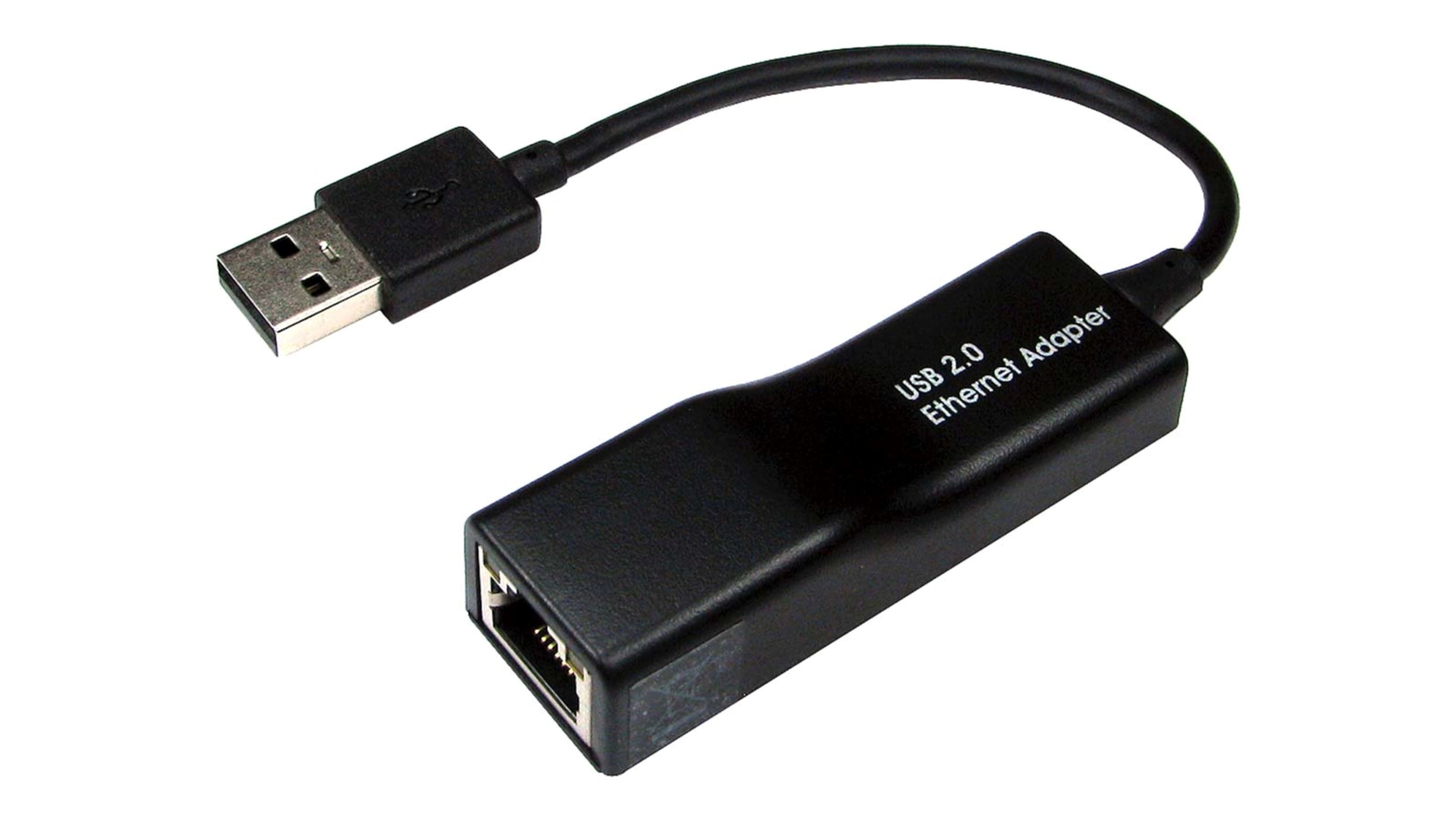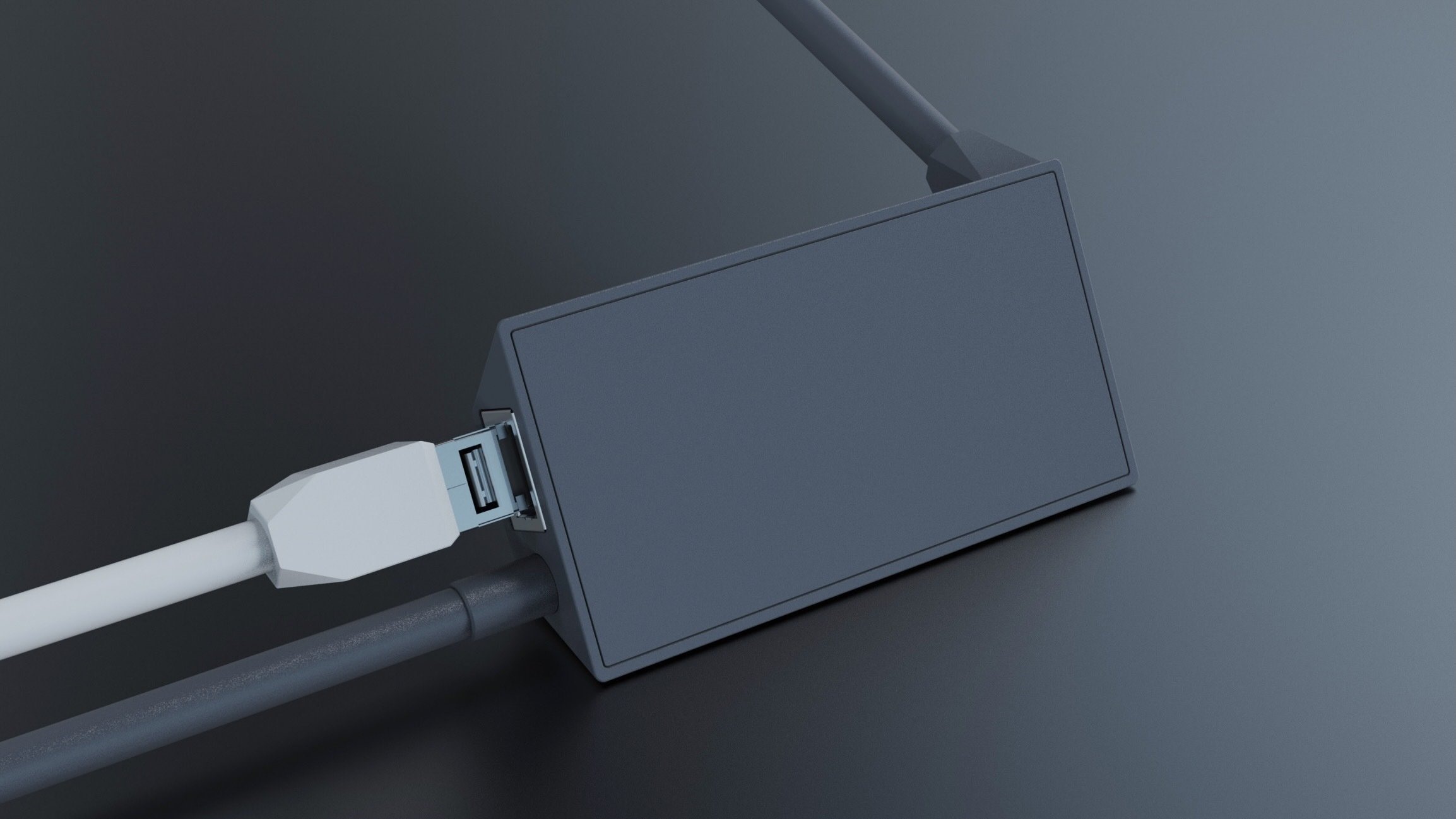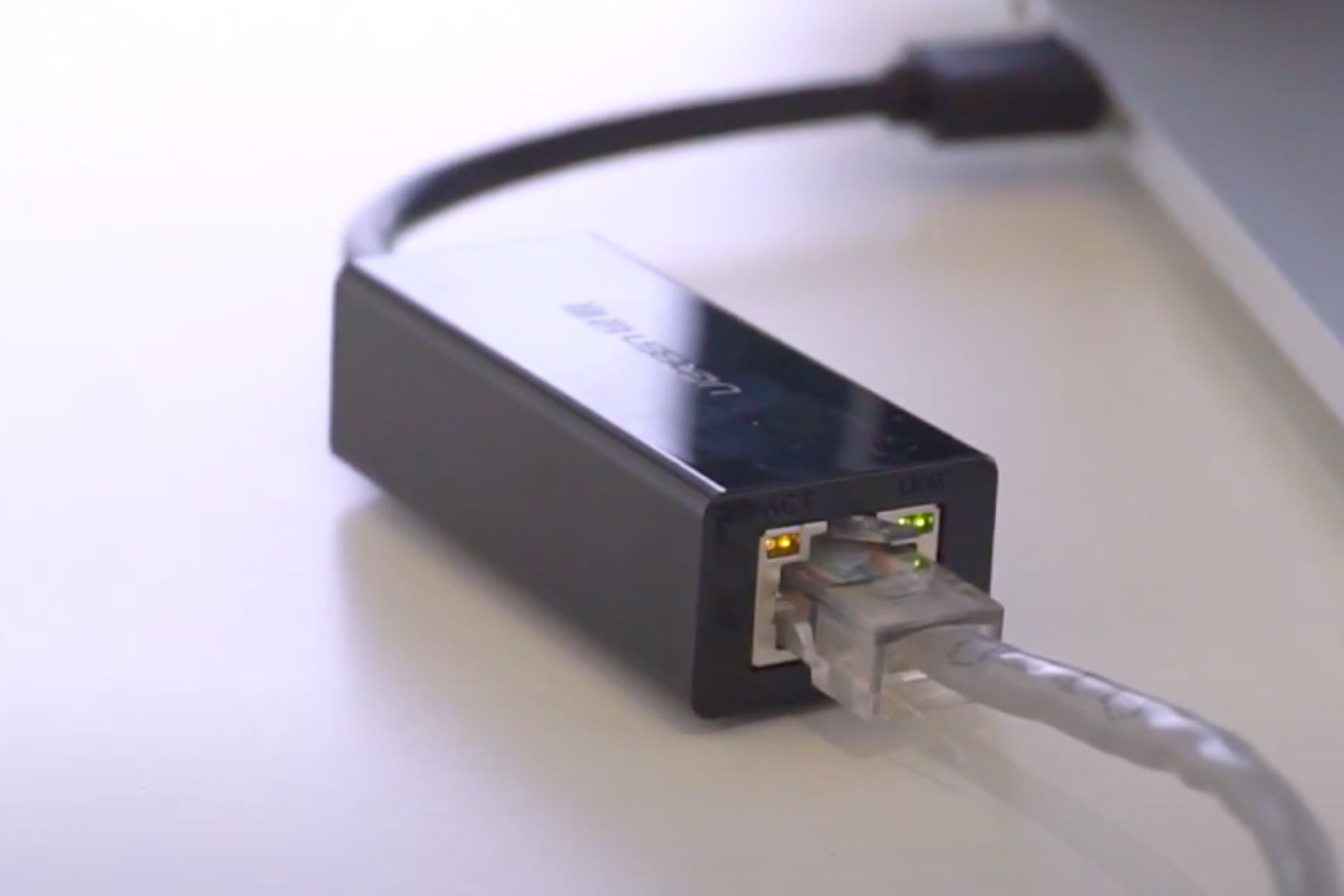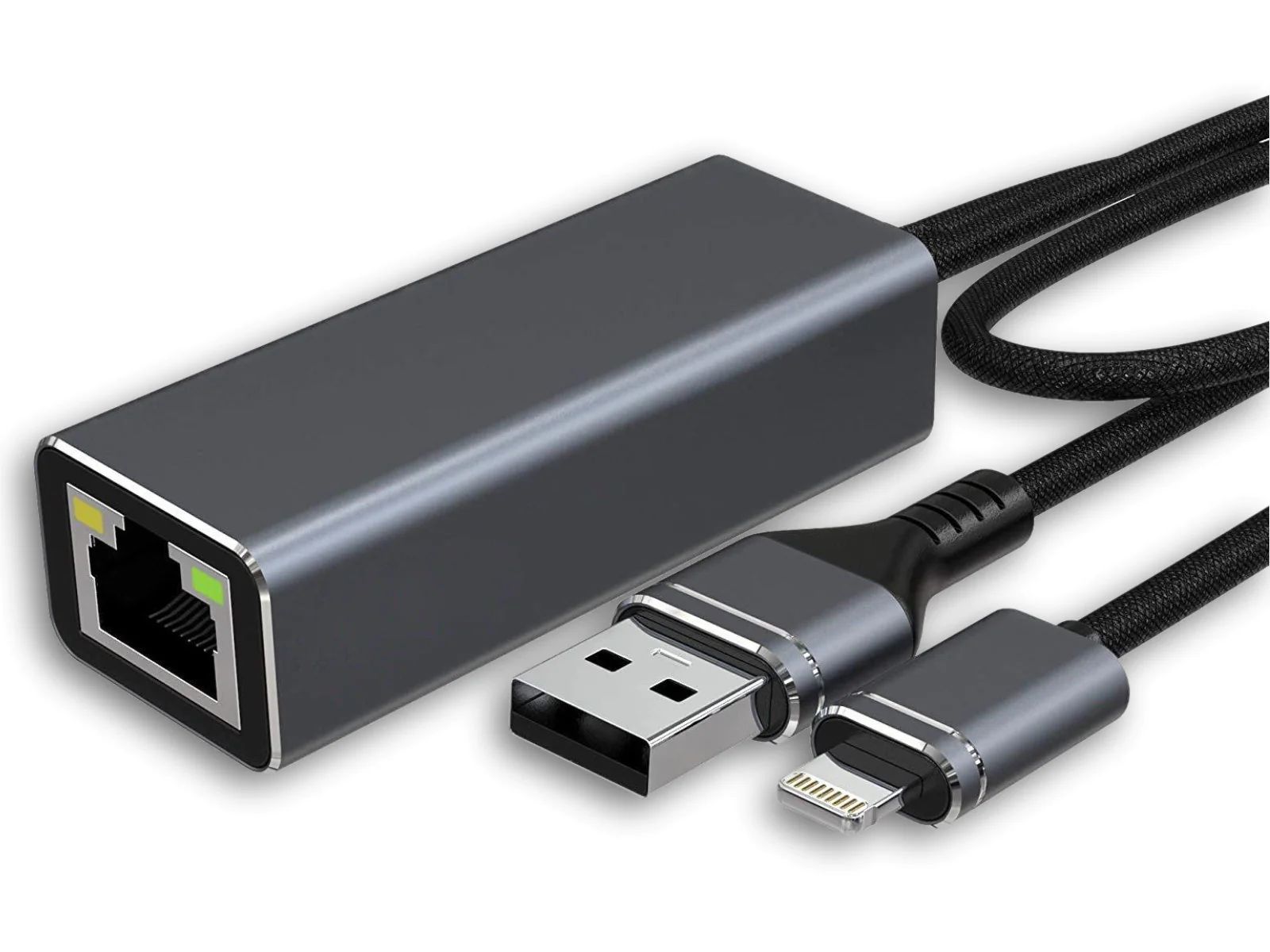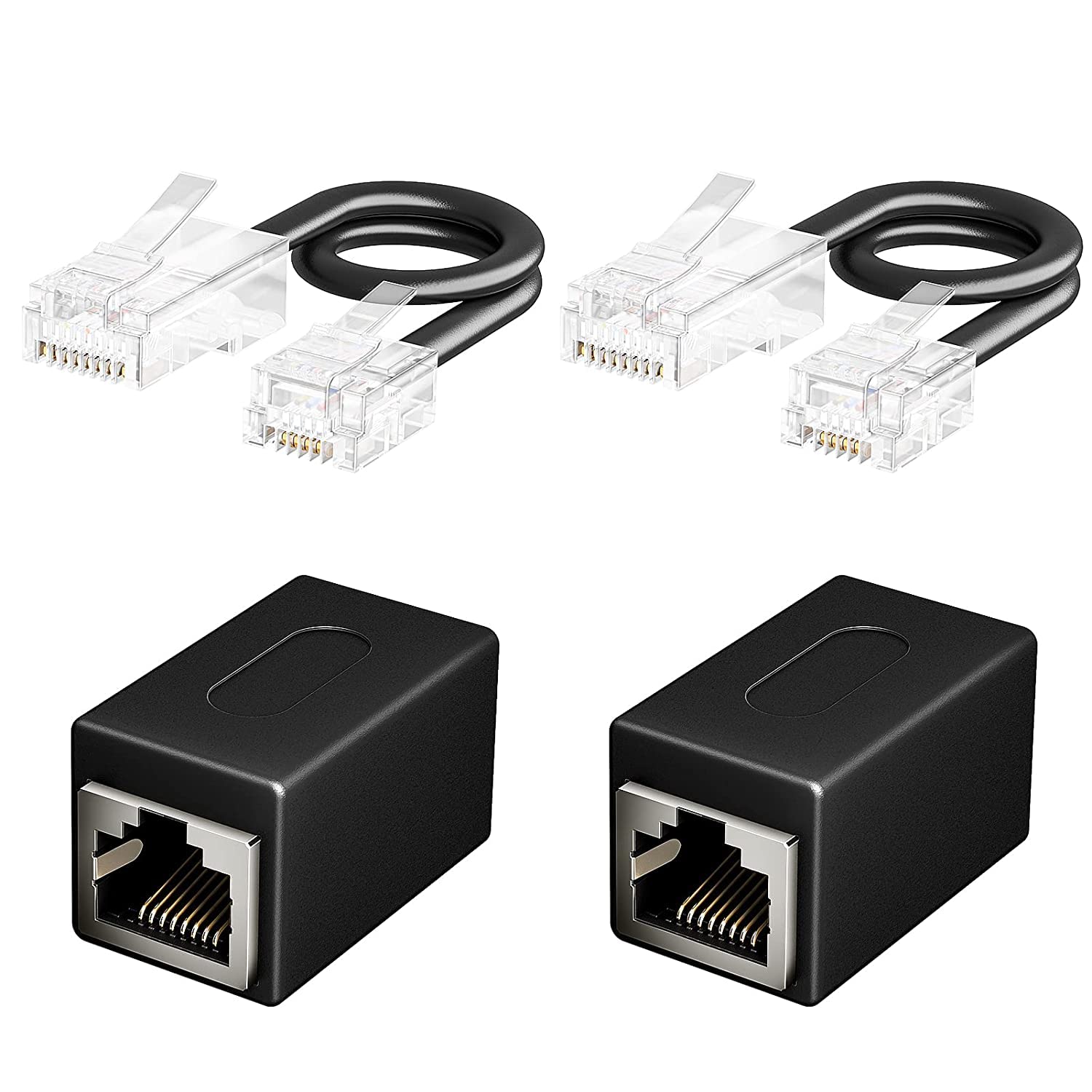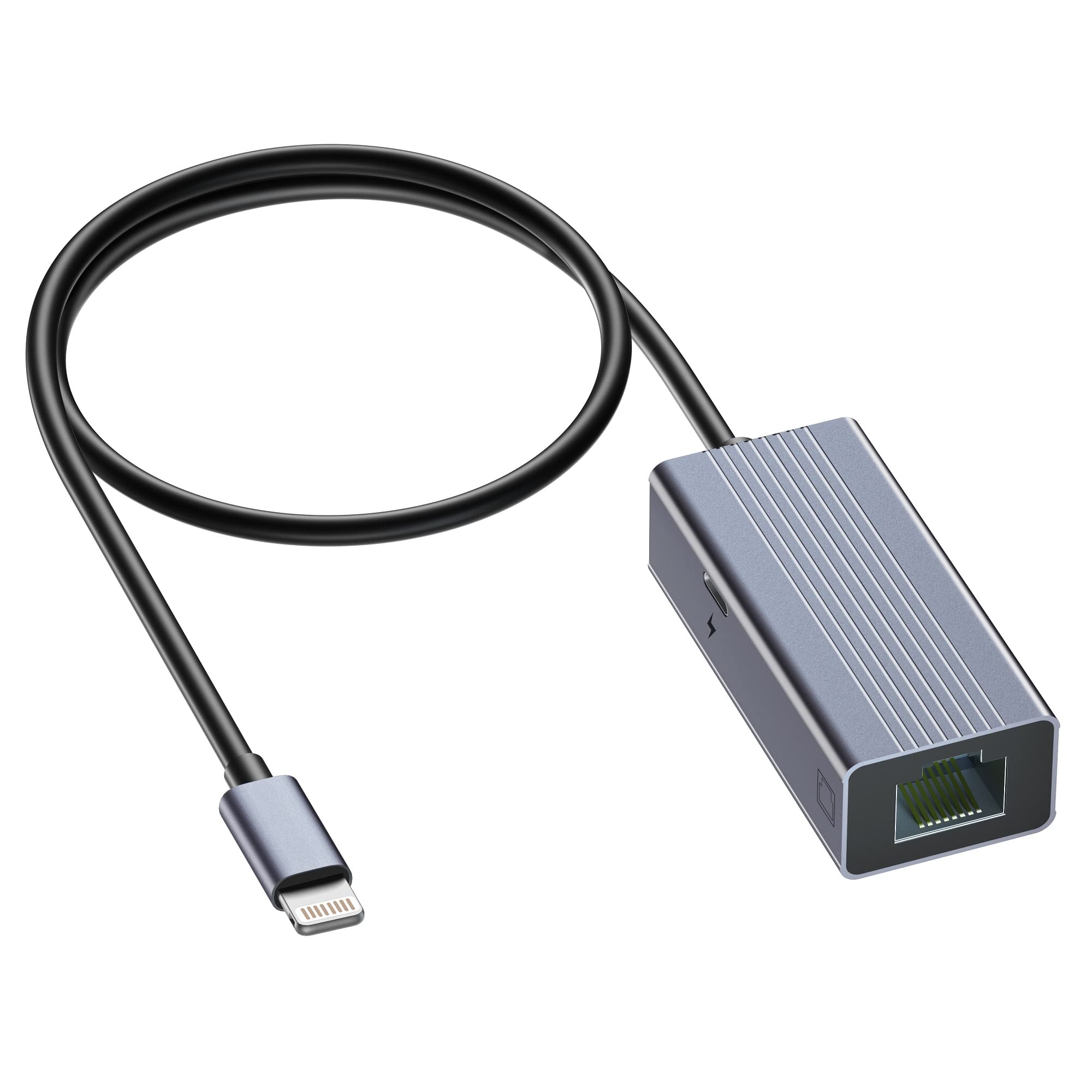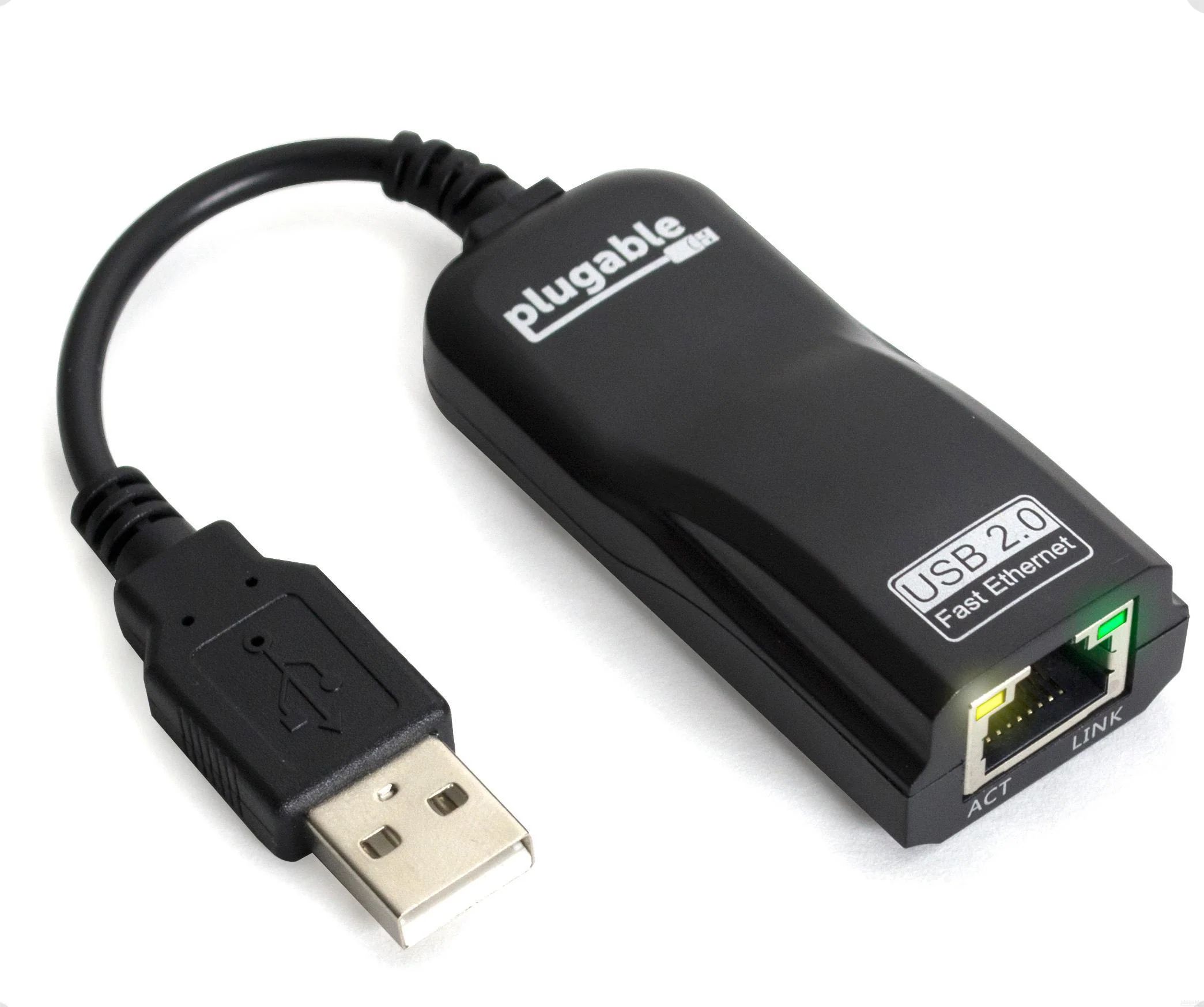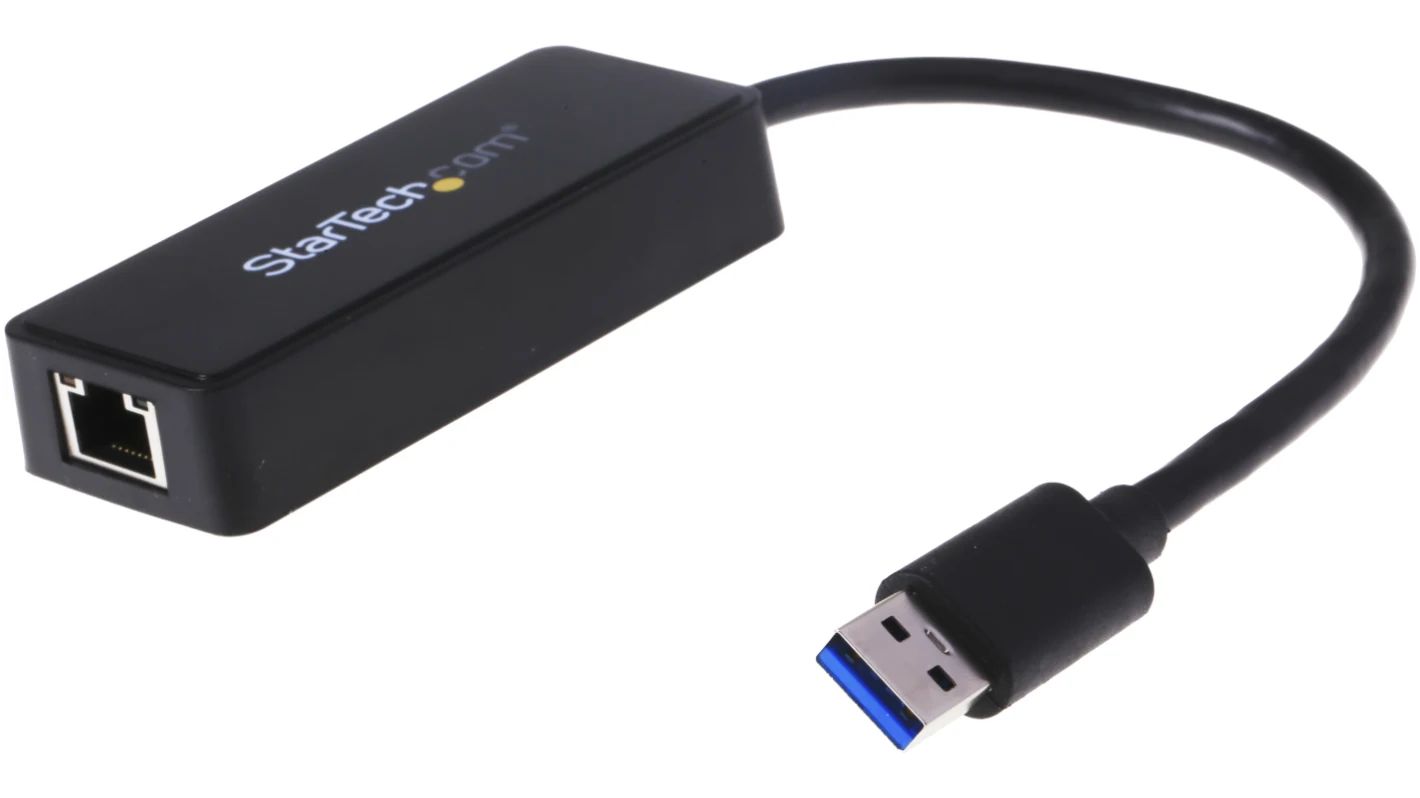Introduction
Welcome to the world of Ethernet adapters! In today’s fast-paced and technologically advanced society, having a seamless and reliable internet connection is crucial. Whether you are a student, a professional, or a casual internet user, a stable and high-speed internet connection is essential to stay connected and productive. This is where an Ethernet adapter comes into play.
An Ethernet adapter, also known as a network adapter or a network interface controller (NIC), is a hardware device that allows a computer or other device to connect to a wired Ethernet network. It acts as a bridge between the computer and the network, facilitating the transmission of data packets over a local area network (LAN).
But what exactly does an Ethernet adapter do and how does it work? In this article, we will delve deeper into the world of Ethernet adapters, exploring their types, benefits, and how to choose the right one for your needs. We will also discuss the process of setting up an Ethernet adapter and troubleshooting common issues that may arise.
Whether you are looking to enhance your gaming experience, improve the speed and stability of your internet connection, or connect multiple devices to your network, understanding the basics of Ethernet adapters is essential. So, let’s dive in and explore the world of Ethernet adapters!
What is an Ethernet Adapter?
An Ethernet adapter, also known as a network adapter or a network interface controller (NIC), is a hardware device that enables a computer or other device to connect to a wired Ethernet network. It serves as a bridge between the computer and the network, facilitating the transmission of data packets over a local area network (LAN).
Essentially, an Ethernet adapter allows your device to communicate with other devices connected to the same network. It converts digital signals generated by your device into electrical signals that can be transmitted through Ethernet cables. These cables are then connected to the network switch, router, or modem, establishing a reliable connection to the internet.
Ethernet adapters come in various forms, including internal cards that are installed inside a computer or external adapters that can be connected via a USB port or a Thunderbolt port. The type of adapter you choose will depend on the compatibility with your device and the flexibility you require.
One of the key functions of an Ethernet adapter is its ability to transmit data at high speeds. Depending on the capabilities of the adapter and the network infrastructure, Ethernet adapters can support different data transfer rates, such as 10 Mbps (megabits per second), 100 Mbps, or even 1000 Mbps, commonly known as Gigabit Ethernet.
Another important feature of Ethernet adapters is their compatibility with various network protocols, such as IPv4 or IPv6. These protocols help in establishing the rules and standards for communication within a network. Ensure that the Ethernet adapter you choose is compatible with the network protocols used by your network to ensure seamless connectivity and data transmission.
Overall, an Ethernet adapter is an essential component for connecting your device to a wired Ethernet network. It enables you to access the internet, share files and resources with other devices on the network, and enjoy a stable and reliable network connection for various activities, including browsing, streaming, gaming, and more.
How Does an Ethernet Adapter Work?
An Ethernet adapter plays a vital role in establishing a connection between your device and a wired Ethernet network. But how does it work? Let’s dive into the inner workings of an Ethernet adapter.
When you connect an Ethernet adapter to your device, it acts as an interface between your device’s hardware and the network infrastructure. The adapter converts the electrical signals produced by your device into digital data packets that can be transmitted over Ethernet cables.
When you send data from your device, the Ethernet adapter takes the data and divides it into smaller packets. Each packet is then labeled with the necessary information, such as the source and destination MAC addresses, and other network-related details.
Once the data packets are prepared, the Ethernet adapter sends them through the Ethernet cable to the network switch or router. The switch or router then directs the packets to the correct destination device based on the MAC address information contained within each packet.
On the receiving end, the Ethernet adapter of the destination device receives the data packets and reassembles them into the original data. The data is then processed and made available to the operating system or application running on the device.
One of the important aspects of Ethernet adapters is their compatibility with Ethernet standards. Ethernet standards set the rules and specifications for how data is transmitted over Ethernet cables. Examples of Ethernet standards include 10BASE-T, 100BASE-TX, and Gigabit Ethernet (1000BASE-T).
The Ethernet adapter you use must be compatible with the Ethernet standard supported by the network infrastructure you are connecting to. This ensures that the data transmission is smooth and reliable, and that the adapter and the network can communicate effectively.
Overall, an Ethernet adapter works by converting electrical signals produced by your device into data packets that can be transmitted over Ethernet cables. It acts as an intermediary between your device and the network infrastructure, enabling you to establish a stable and high-speed connection to a wired Ethernet network.
Types of Ethernet Adapters
Ethernet adapters come in various types and forms, each designed to cater to different connectivity needs. Understanding the different types can help you choose the right Ethernet adapter for your specific requirements. Let’s explore some common types of Ethernet adapters:
1. Internal Ethernet Cards: These adapters are installed inside a computer’s motherboard or expansion slot. They offer a permanent and dedicated Ethernet connection. Internal Ethernet cards are often found in desktop computers or servers and provide a stable and reliable network connection.
2. External USB Ethernet Adapters: These adapters are compact and portable, designed to be plugged into a USB port. They are commonly used with laptops, tablets, or devices that lack built-in Ethernet ports. USB Ethernet adapters are convenient for adding a wired network connection to your device while on the go.
3. Thunderbolt Ethernet Adapters: Thunderbolt is a high-speed data transfer interface commonly found in Apple devices. Thunderbolt Ethernet adapters allow you to connect your device to a wired network using the Thunderbolt port. These adapters offer fast and reliable network connectivity for Thunderbolt-enabled devices.
4. Powerline Ethernet Adapters: Powerline adapters utilize your home’s existing electrical wiring to transmit data signals. They consist of a pair of adapters that are plugged into power outlets. With powerline adapters, you can extend your network connection to areas of your home where Wi-Fi signals may be weak or unreliable.
5. Ethernet over Coax (EoC) Adapters: EoC adapters are used to transmit Ethernet signals over coaxial cables. This technology is often employed in buildings or homes where coaxial cables are already installed for cable TV or security camera systems. EoC adapters allow you to utilize the existing infrastructure for network connectivity.
6. Fiber Optic Ethernet Adapters: Fiber optic adapters are used to connect devices to a fiber optic network. Fiber optic cables offer higher data transfer speeds and longer distances compared to traditional copper Ethernet cables. Fiber optic Ethernet adapters are typically used in enterprise environments where high-speed and long-distance network connections are required.
It’s important to consider your device’s compatibility and connectivity needs when choosing the right type of Ethernet adapter. Whether you need a permanent internal card, a portable USB adapter, or a specialized adapter for specific network infrastructure, understanding the different types will help you make an informed decision.
Benefits of Using an Ethernet Adapter
Using an Ethernet adapter can offer several benefits when it comes to network connectivity and internet access. Let’s explore some of the advantages of using an Ethernet adapter:
1. Reliable and Stable Connection: Ethernet adapters provide a more stable and consistent network connection compared to wireless connections. Since Ethernet adapters rely on wired connections, they are less susceptible to interference from other devices or environmental factors, resulting in a more reliable and uninterrupted connection.
2. Faster Data Transfer Speeds: Ethernet adapters support high-speed data transfer rates, such as 100 Mbps or even Gigabit Ethernet (1000 Mbps). This allows for faster and more efficient data transmission, making activities like online gaming, streaming HD videos, and large file transfers smoother and lag-free.
3. Lower Latency: Ethernet connections typically have lower latency or delay compared to wireless connections. This is especially important for applications that require real-time communication, such as online gaming or video conferencing, where even a small delay can greatly impact the user experience.
4. Increased Network Security: Wired Ethernet connections offer increased network security compared to wireless connections. Since Ethernet connections require physical access to the cable, it is more difficult for unauthorized users to intercept or access the data being transmitted. This makes Ethernet adapters a preferred choice for sensitive data transfers or secure network environments.
5. Multiple Device Connectivity: Ethernet adapters allow for multiple devices to be connected to the network simultaneously. With the use of network switches or routers, you can connect multiple devices, such as computers, gaming consoles, smart TVs, and more, without experiencing a degradation in network performance.
6. Compatibility with Older Devices: Ethernet adapters provide backward compatibility with older devices that may not have built-in Wi-Fi capabilities or have outdated wireless standards. By connecting an Ethernet adapter, you can easily add network connectivity to these devices without the need for expensive upgrades or external Wi-Fi dongles.
7. Seamless Integration in Network Infrastructure: Ethernet adapters integrate seamlessly with existing network infrastructure, such as routers, switches, and modems. They are compatible with various network protocols, ensuring that they work efficiently with different network environments and configurations.
Overall, using an Ethernet adapter offers a range of benefits, including a stable and reliable connection, faster data transfer speeds, increased network security, and the ability to connect multiple devices simultaneously. Whether you need a wired connection for gaming, streaming, or business purposes, Ethernet adapters provide an excellent solution for reliable and high-performance network connectivity.
Choosing the Right Ethernet Adapter for Your Needs
When it comes to selecting the right Ethernet adapter for your needs, there are several factors to consider. Let’s explore some key considerations to help you make an informed decision:
1. Compatibility: Ensure that the Ethernet adapter you choose is compatible with your device’s operating system. Whether you are using Windows, macOS, or Linux, check for driver compatibility and support for your specific OS version.
2. Connection Type: Consider the type of connection your device supports. If your device has an available internal expansion slot, an internal Ethernet card may be a suitable option. For devices without an internal slot, such as laptops or tablets, USB or Thunderbolt Ethernet adapters offer convenient plug-and-play connectivity.
3. Speed and Performance: Consider the data transfer speeds required for your activities. If you need high-speed connections for gaming, streaming, or file transfers, opt for adapters that support Gigabit Ethernet or higher speeds. However, if your needs are more basic, like web browsing or email, an adapter with lower speed capabilities may suffice.
4. Network Environment: Take into account the network infrastructure you will be connecting to. If your network supports Gigabit Ethernet, ensure that the adapter is compatible with this standard. Consider factors such as network switches, routers, and cable lengths when selecting the appropriate adapter.
5. Portability: If you frequently travel or require flexibility in connecting to different networks, consider a portable USB or Thunderbolt Ethernet adapter. These adapters are lightweight, easy to carry, and offer quick connectivity wherever you go.
6. Security Features: If network security is a priority, look for Ethernet adapters that offer advanced security features, such as encryption protocols or VLAN support. These features can help ensure the privacy and integrity of your data transmissions.
7. Budget: Determine your budget and select an Ethernet adapter that fits within your price range. While high-end adapters may offer advanced features and faster speeds, more affordable options can still provide reliable network connectivity for basic needs.
Lastly, read reviews and consider feedback from other users to gauge the performance and reliability of the Ethernet adapter you are considering. This can provide valuable insights that may influence your decision.
By considering these factors, you can choose the Ethernet adapter that best meets your specific needs, ensuring optimal network performance and connectivity for your device.
Setting Up an Ethernet Adapter
Setting up an Ethernet adapter is a relatively straightforward process that allows you to quickly establish a wired network connection. Here’s a step-by-step guide to help you set up your Ethernet adapter:
1. Check Compatibility: Ensure that the Ethernet adapter you have is compatible with your device and operating system. Verify if any drivers or software updates are required to ensure smooth installation.
2. Connect the Ethernet Adapter: If you are using an internal Ethernet card, shut down your computer and carefully insert the card into an available expansion slot on your motherboard. For external adapters, simply plug the Ethernet cable into the appropriate port on the adapter, and then connect the adapter to an available USB or Thunderbolt port on your device.
3. Connect to the Network: Connect one end of the Ethernet cable to the Ethernet adapter and the other end to a network switch, router, or modem. Ensure that the cable is securely inserted into both the adapter and the network device.
4. Power On the Network Device: If you are connecting to a router or modem, ensure that the device is powered on and functioning. This will establish a connection between your adapter and the network infrastructure.
5. Configure Network Settings: In most cases, your device will automatically detect and configure the network settings when connected to the Ethernet adapter. However, if necessary, you can manually configure the network settings through the network settings menu on your device. This may include setting a static IP address or configuring DNS servers.
6. Test the Connection: Once the Ethernet adapter is connected and the network settings are in place, check if your device is successfully connected to the network. Open a web browser, visit a website, and ensure that you have internet access. You can also perform a speed test or download/upload test to verify the performance of your connection.
7. Troubleshooting: If you encounter any issues during the setup process, refer to the user manual or online resources provided by the manufacturer. Troubleshoot common problems, such as incorrect network settings, outdated drivers, or faulty cables.
Remember to regularly update drivers and software for your Ethernet adapter to ensure optimal performance and compatibility with your device’s operating system.
By following these steps, you can set up your Ethernet adapter and enjoy the benefits of a stable and reliable wired network connection for your device.
Troubleshooting Common Ethernet Adapter Issues
While Ethernet adapters generally provide a reliable network connection, there may be instances where you encounter issues. Here are some common Ethernet adapter problems and troubleshooting steps to resolve them:
1. No Connection or Limited Connectivity:
- Check the physical connection: Ensure that the Ethernet cable is securely plugged into both the Ethernet adapter and the network device.
- Restart your devices: Power off and then power on your computer, router, and modem to refresh the network connection.
- Check network settings: Verify that your device is configured to obtain network settings automatically or manually set the proper IP address, subnet mask, gateway, and DNS server.
2. Slow Internet Speed:
- Check network congestion: Make sure there are no other devices or applications on the network consuming excessive bandwidth.
- Update drivers: Ensure that you have the latest drivers for your Ethernet adapter installed to optimize its performance.
- Consider network infrastructure: Check if your router or modem is capable of providing the desired internet speed. Upgrading your network infrastructure may be necessary if you need faster speeds.
3. Intermittent Connection:
- Inspect cable quality: Check the Ethernet cable for any signs of damage or wear. Replace the cable if necessary.
- Reposition devices: Move your computer or router away from potential sources of electromagnetic interference, such as other electronic devices or appliances.
- Update firmware: Ensure that your router’s firmware is up to date to address any known connectivity issues.
4. Driver Issues:
- Update drivers: Visit the manufacturer’s website and download the latest drivers for your Ethernet adapter. Install the drivers to ensure compatibility and performance.
- Uninstall and reinstall drivers: If you are experiencing persistent driver issues, uninstall the existing driver, restart your computer, and then reinstall the drivers.
5. Network Configuration Errors:
- Double-check network settings: Ensure that your device is properly configured with the correct IP address, subnet mask, gateway, and DNS server. Correct any discrepancies if needed.
- Reset network settings: If you are unsure about your device’s network settings, you can reset them to default by performing a network reset or factory reset.
If you have tried these troubleshooting steps and are still experiencing issues with your Ethernet adapter, it may be helpful to contact the manufacturer’s support for further assistance. They can provide more specific troubleshooting steps or potentially offer a replacement if your adapter is found to be faulty.
Remember to regularly update your Ethernet adapter’s drivers and keep your network infrastructure up to date to minimize the likelihood of encountering these issues in the future.
Conclusion
Ethernet adapters play a crucial role in establishing a stable and reliable wired network connection for your devices. Whether you’re a gamer, a streamer, a professional, or a casual internet user, using an Ethernet adapter offers numerous advantages in terms of speed, stability, and security.
In this article, we explored what an Ethernet adapter is and how it works. We discussed the different types of Ethernet adapters available, including internal cards, USB adapters, Thunderbolt adapters, powerline adapters, Ethernet over coax adapters, and fiber optic adapters. Each type serves specific connectivity needs and can be chosen based on compatibility, speed, portability, and more.
We also highlighted the benefits of using an Ethernet adapter, including a reliable connection, fast data transfer speeds, increased network security, and the ability to connect multiple devices simultaneously. By connecting to a wired network, Ethernet adapters offer a more stable and consistent experience, especially for activities like gaming, streaming, and other bandwidth-intensive tasks.
When selecting the right Ethernet adapter for your needs, it’s essential to consider factors such as compatibility, connection type, speed requirements, network environment, portability, security features, and budget. This will help ensure the adapter you choose aligns with your specific requirements and provides optimal performance.
We also provided a step-by-step guide on setting up an Ethernet adapter, along with troubleshooting steps for common issues such as connection problems, slow speeds, intermittent connectivity, driver issues, and network configuration errors. By following these steps, you can quickly resolve any problems that may arise and enjoy uninterrupted network connectivity.
In conclusion, Ethernet adapters offer a reliable and efficient way to connect your devices to a wired network. Whether you’re looking to boost your internet speeds, enhance network security, or simply improve the overall performance of your device, investing in a quality Ethernet adapter can make a significant difference.
So, take advantage of the benefits and convenience that Ethernet adapters provide, and enjoy a seamless and reliable network connection for all your internet activities.







